planting drift rose deep?
suncoastflowers
7 years ago
last modified: 7 years ago
Featured Answer
Sort by:Oldest
Comments (30)
jim1961 / Central Pennsylvania / Zone 6
7 years agolast modified: 7 years agosuncoastflowers
7 years agoRelated Discussions
Red Drift Rose- OK In Planter?
Comments (2)Whew! Thanks. I did ask the pro at the nursery, but wanted to be sure. She said if the pot's big, it's ok, and to prune it in the Fall. I'm so excited to have roses on the deck. I'm actually running out of spots to put things in the yard....See MoreHow deep do you plant a rose tree?
Comments (2)Since pots have finite space, the issue with deep planting in a pot is that you've wasted a fair amount of pot space. The more usual thing is to plant them at a normal depth, and use a stake for stability. You will probably find out they need staking anyway....See MoreHow Deep Does A Rose Have to Be Planted to Go Own Root?
Comments (3)Personally I prefer my roses to go own root. I figure that,if they are vigorous enough on their own roots, the scion-the rose I want and bought-will eventually take over the rootstock, and i'll wind up with a longer-lived,better plant. In other words,the graft just serves as support for the rose until it is strong enough to "stand on it's own". If the rose isn't vigorous enough to grow well own-root, I still like the idea of it having some of it's own roots,with the rootstock to help it along; I don't see how that would kill off the rootstock,because the own-roots wouldn't be vigorous enough to do so. So I don't understand what you are worried about. I plant mine with the base of the scion's canes just slightly below ground level (I'm in Tuscany, Italy, so about a zone 8); no deeper, because what you do want to encourage is the creation of one single, strong own-root plant. If you plant it too deep, all of the canes can root along their lengths,thus creating a tiny thicket of small,own-rooted plant that just compete with each other and wind up ruining the entire situation....See MoreDo I plant Apricot Drift roses along cement steps?
Comments (7)hello there =), Where in zone6 are you. Rose performance is influenced by area. Here in zone 7b Alabama their performance is excellent. I am actually edging a side walkway myself with Apricot drifts right now. I am a huge fan of the drift series. Your steps are a lot nicer than the area I am working on and I think the apricot drifts would look amazing. I also grow Sweet drift and it is the best performer of the bunch here. Ill look for pictures in my phone and post them for you. here are sweet drift with popcorn and red drift. Sorry I realized I don’t have a picture that show the front view of the border. I am doing apricot drift on another area and coral drift on another one, but they were just planted so no pictures. They all have been excellent here. I fertilize with extended release fertilizer on early spring, and prune them to shape. The rest of the year they just get water and zero maintenance. My drift roses look like this from April to October/November depending on how cold it gets. They are truly continuous bloomers. sweet drift is my best performer, but also gets the biggest. I would recommend at least 3 feet in between for this one. In my warmer zone 7 they get to almost 4 wide. Another options if you are open to other colors that are low growing and would look great are: The fawn/faun rose which would be harder to find but beautiful Polyantha Kendyl Marie which I think can only be purchased from Heirloom Roses. This one is extremely resistant to blackspot here. These are two plants, they are just starting to bloom. Also rose The Fairy would look fantastic. Mine are still very small, but here is a link to helpmefind which is a site with amazing rose info. The light pink is the fairy https://www.helpmefind.com/rose/l.php?l=21.158293 Good luck 👍🏽...See MorePatty W. zone 5a Illinois
7 years agoBethC in 8a Forney, TX
7 years agoValRose PNW Wa 8a
7 years agolucillle
7 years agolast modified: 7 years agoValRose PNW Wa 8a
7 years agolast modified: 7 years agozack_lau z6 CT ARS Consulting Rosarian
7 years agolast modified: 7 years agoValRose PNW Wa 8a
7 years agolast modified: 7 years agolucillle
7 years agoValRose PNW Wa 8a
7 years agoValRose PNW Wa 8a
7 years agozack_lau z6 CT ARS Consulting Rosarian
7 years agoValRose PNW Wa 8a
7 years agolucillle
7 years agoValRose PNW Wa 8a
7 years agoPatty W. zone 5a Illinois
7 years agolast modified: 7 years agozack_lau z6 CT ARS Consulting Rosarian
7 years agolast modified: 7 years agojim1961 / Central Pennsylvania / Zone 6
7 years agojacqueline9CA
7 years agoBethC in 8a Forney, TX
7 years agobraverichard (6a, North MO)
7 years agoValRose PNW Wa 8a
7 years agolast modified: 7 years agobraverichard (6a, North MO)
7 years agojardineratx
7 years agoValRose PNW Wa 8a
7 years agozack_lau z6 CT ARS Consulting Rosarian
7 years agobraverichard (6a, North MO)
7 years agoValRose PNW Wa 8a
7 years ago
Related Stories
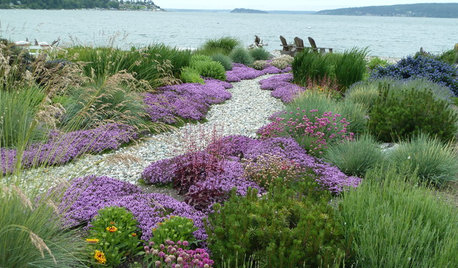
PLANTING IDEAS7 Ways to Use Drifts and Masses In Your Garden
Whether in formal or natural landscapes, grasses or succulents planted en masse elevate the garden
Full Story
GARDENING GUIDESGreat Design Plant: Knock Out Roses
As glorious as their high-maintenance kin for a fraction of the work, Knock Out roses make even beginners look like garden stars
Full Story
HOUSEKEEPING20 Things You Might Be Forgetting to Spring-Clean
Clean these often-neglected areas and your house will look and feel better
Full Story
GARDENING GUIDESWhat Kind of Roses Should You Grow?
Want to add the beauty of roses to your garden? Find out which ones, from old-fashioned to modern, are right for you
Full Story
GARDENING GUIDES6 Wonderfully Easy Roses for Any Gardener
Look like an expert even if you're just starting out, with these low-maintenance gems of the rose world
Full Story
GARDENING GUIDES6 Captivating Roses for an Alluringly Fragrant Garden
Perfume your garden with aromas from richly spicy to lightly sweet, without sacrificing an inch of color
Full Story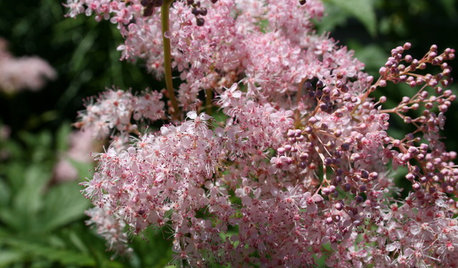
GARDENING GUIDESGreat Design Plant: Discover Queen of the Prairie's Sweet Aroma
If you like the look of cotton candy and the smell of roses and want an easy perennial, you're in luck with this plant
Full Story
GARDENING GUIDES6 Unsung Bulbs for Fall Planting
Don't hang up your spade after summer — plant these unusual bulbs in fall for a spectacular spring show
Full Story
WINTER GARDENINGPruning Secrets for Exquisite Roses
Encourage gorgeous blooms year after year with this time-tested advice on how to prune your rosebush in winter for health and shape
Full Story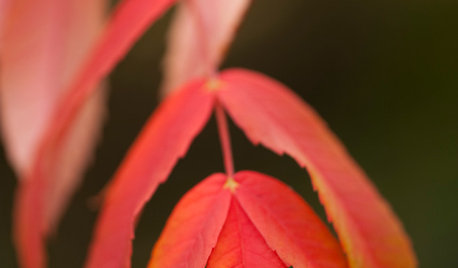
GARDENING GUIDESGreat Design Plant: Rhus Glabra
Smooth sumac provides powerful jolts of fall color and persistent fruit clusters that add interest through the winter
Full Story



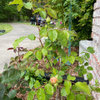
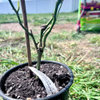

jim1961 / Central Pennsylvania / Zone 6